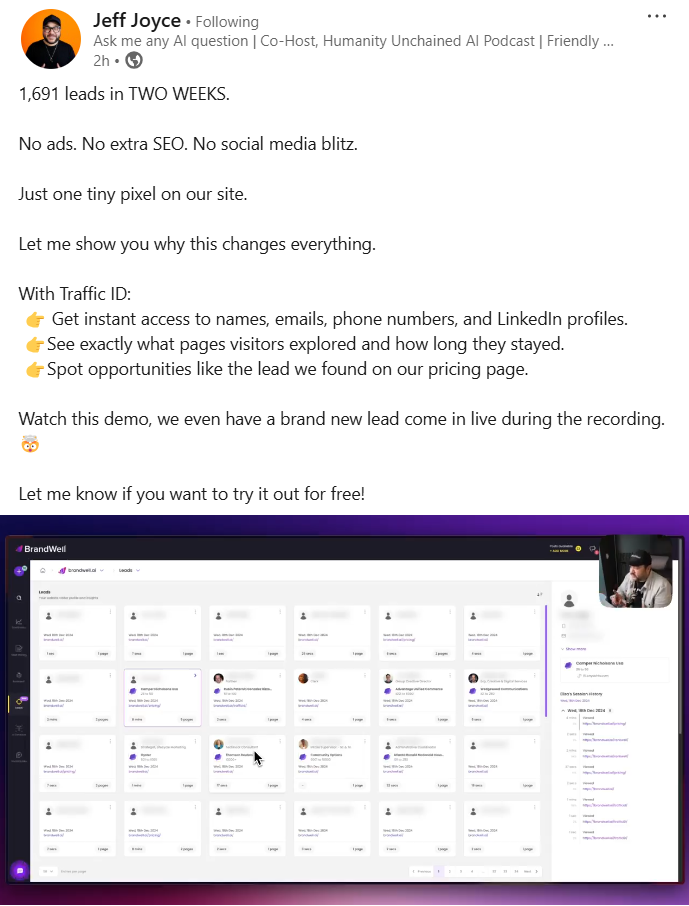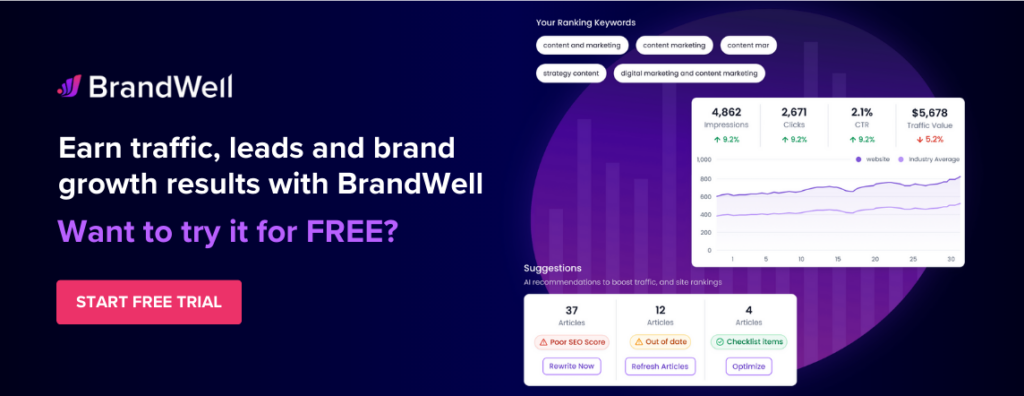Discover top guides, trends, tips and expertise from AIO Writers
How To Build An Effective Inbound Lead Generation Strategy: Beginner’s Guide
Jeff Joyce
Thursday, 6th Feb 2025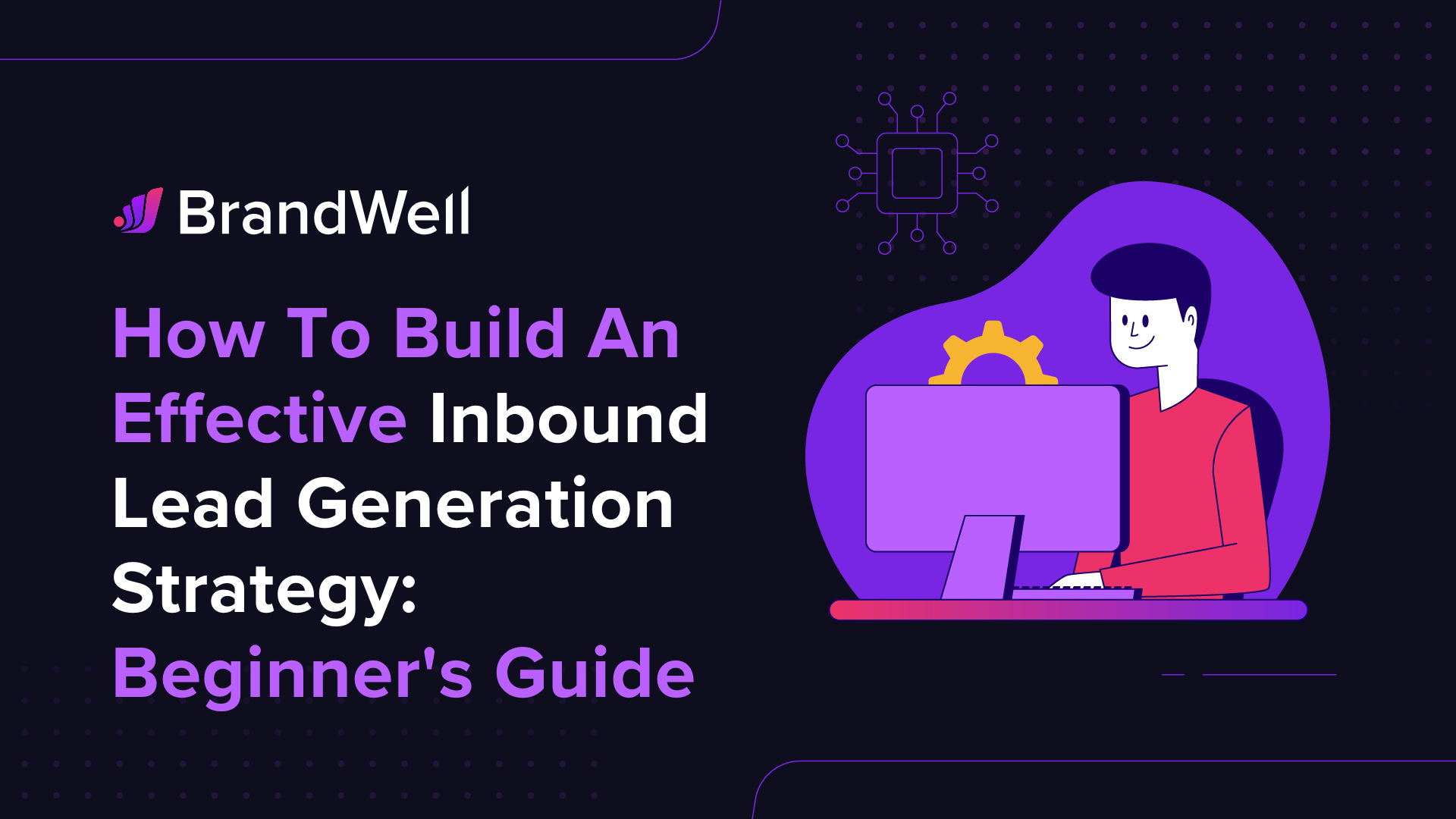
Generating high-quality leads is no small feat. You’ve spent countless hours perfecting your content, fine-tuning your SEO, and executing inbound marketing campaigns. Yet, a frustrating reality persists: many website visitors leave without a trace, taking their interest — and your potential opportunity — with them.
What if you could change that? Anonymous website visitor identification can transform how you approach inbound lead generation. Instead of wondering who’s exploring your content, you get to identify who these visitors are and unlock actionable insights about their behavior and interests.
This means turning faceless traffic into warm, qualified leads you can target with tailored outreach.
In this blog post, I’ll introduce you to a game-changing tool that makes this possible. Let’s explore how it works and how you can leverage it to uncover hidden opportunities right on your site.
Table Of Contents:
- What is an Inbound Lead?
- 13 Types of Inbound Lead Generation Strategies
- Tips on How to Create Great Content for Lead Generation
- How to Manage Inbound Leads
- Build a Successful Inbound Lead Generation Machine with TrafficID
- Turn Insights into Action with TrafficID
What is an Inbound Lead?
First, let’s talk about inbound leads.
Inbound leads are prospects who find you, rather than you looking for them. These are the people who engage with your content, download your resources, sign up for your newsletter, or otherwise express interest in your product or service.
Unlike outbound leads — where you’re pushing your message outward — these leads come from a pull strategy, often seeking solutions to their problems and finding your brand as the answer.
Inbound leads are often warmer and more receptive because they’ve taken the initiative to learn about your brand.
BrandWell’s TrafficID tool captures these anonymous leads by tracking and identifying them as they engage with your site, giving you a deeper understanding of their interests and how far they’ve come in their buyer’s journey.
Let me show you what TrafficID can do:
So how do you attract inbound leads?
The answer is inbound lead generation.
In inbound lead generation, you’re offering helpful resources, answering people’s questions, and becoming a trusted voice in your industry.
This content — whether it’s a blog post, video, webinar, or whitepaper — draws people in and encourages them to engage with your brand.
It’s about building trust, educating prospects, and guiding them down the lead generation funnel at their own pace.
Think of it as a warm invitation versus a cold call. It’s an effective method for generating leads organically and building rapport with your target audience.
The inbound lead generation process often starts with attracting visitors through SEO, social media, or paid ads. Once they land on your site, you capture their interest with engaging content and motivate them to share their contact information, usually in exchange for a resource like an e-book or case study.
Traditional inbound lead gen strategies rely heavily on forms, but what about those who don’t convert right away?
TrafficID helps fill that gap by identifying visitors who are showing buying signals — like repeated visits or browsing key pages — so you can follow up on these qualified leads even if they haven’t opted in yet.
With TrafficID, you don’t have to wonder. You’ll have access to insights about who visited your site, what they looked at, and how interested they might be — letting you reach out at the perfect time with the perfect message.
13 Types of Inbound Lead Generation Strategies
Now that you understand what inbound leads are, let’s dive into the different strategies you can use to attract qualified leads. These strategies are designed to draw your ideal audience in, engage them with relevant content, and build enough trust to encourage them to share their contact information — turning visitors into prospects.
1. Content Marketing
Content marketing is the backbone of inbound lead generation. This involves creating valuable, educational, or entertaining content that addresses your audience’s needs.
Blog posts, videos, infographics, and podcasts are just a few formats you can use to attract and engage your audience.
For example, a marketing agency might publish a comprehensive guide on “How to Generate More Leads with SEO,” targeting business owners looking to improve their online visibility. If the content is valuable, it builds trust and positions the agency as an expert in the field.
The objective of content marketing is to get the reader to submit their information through opt-in forms after consuming your content. But what if they read your entire guide without leaving their contact info?
With TrafficID, you can still identify these anonymous visitors as a lead, knowing what content they engaged with and tailoring follow-up communications accordingly.
In the screenshot below, you can see all the information about our lead, Margaret, including her full name, phone number, email, location, professional background, and LinkedIn account. TrafficID also tells you that she visited your website three times from February to March and that her last action was viewing the demo page.
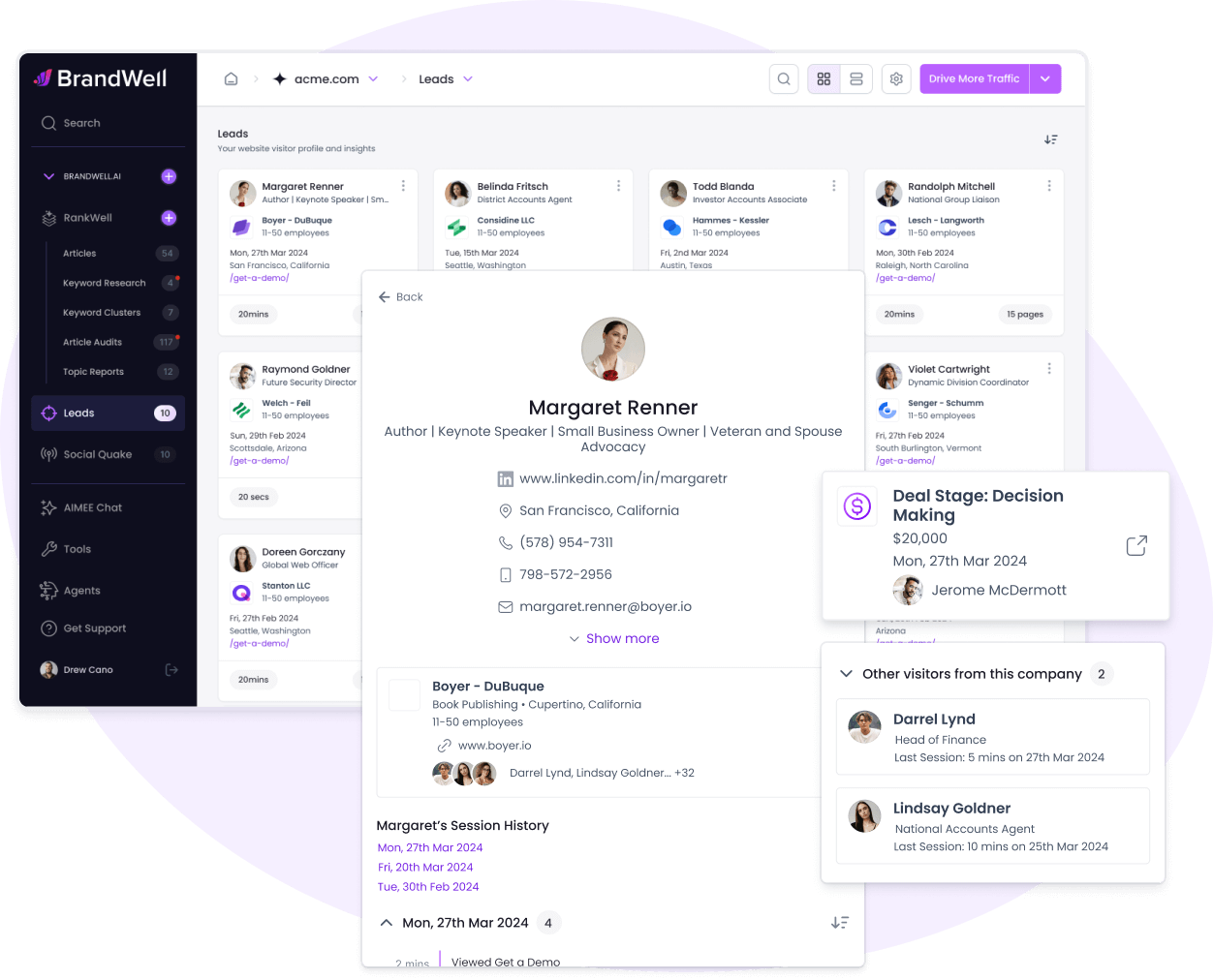

From these details, you can tailor your future content according to her interests.
2. Search Engine Optimization (SEO)
SEO is all about optimizing your website and content to rank higher on search engine results pages. The goal is to drive organic traffic from search engines like Google, where prospects are actively searching for solutions related to your offerings. This means targeting specific keywords, building backlinks, and creating quality content that addresses search intent.
A sales team can use SEO to target long-tail keywords like “best CRM software for small businesses” to attract businesses searching for CRM solutions.
High-ranking content brings visitors to your site, but not all will immediately convert. TrafficID helps bridge this gap by giving you access to visitor data, showing which keywords are attracting them and what pages they explore, so you can optimize your SEO strategy.
Looking at another example, we can see that this particular lead comes from the telecom industry, lives in Tennessee, and is interested in writing stories with AI. You can easily turn these terms into long-tail keywords for your next SEO blog post.
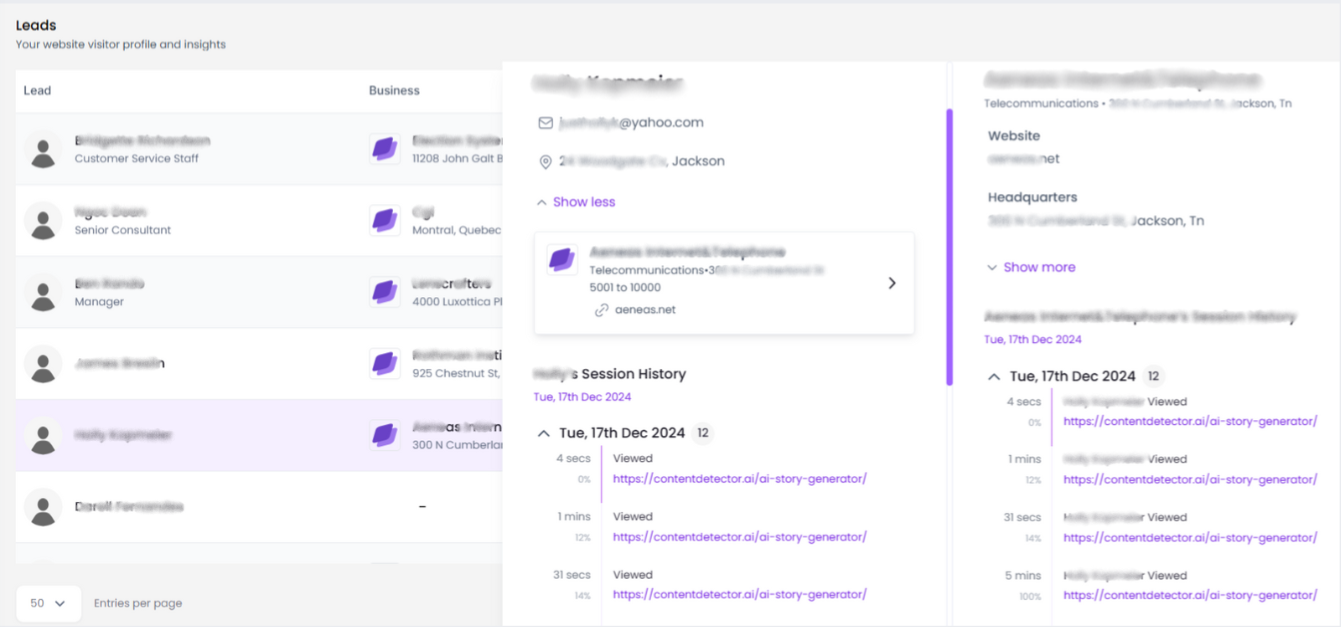

3. Social Media Marketing
Social media platforms are excellent for building brand awareness and engaging with potential leads. Sharing content, running ads, and interacting with your audience on social media channels like LinkedIn, Facebook, and Twitter can generate a steady flow of inbound traffic.
For example, a lead generation company might host a Q&A session on LinkedIn, addressing common pain points in the industry. This type of interaction draws potential leads, who follow the company for future insights.
Learn more about how to create awesome content for social media.
4. Email Marketing
Old-school email marketing remains one of the most effective inbound lead gen strategies. It’s about nurturing relationships with leads over time by sending them valuable content, updates, and offers through email. A well-maintained email list is a goldmine of potential conversions.
For instance, a B2B agency might send a monthly newsletter with industry insights and case studies, keeping their audience engaged and driving them back to the website for more resources.
Watch how we used AI to write a newsletter in just 16 minutes 👇
5. Lead Magnets
Entice visitors with lead magnets — these are additional pieces of content that readers can access in exchange for submitting their contact information. Downloadable guides, templates, whitepapers, or exclusive videos that offer deeper insights are some examples of lead magnets.
For example, offering a free ebook titled “10 Proven Strategies to Writing Better Content” or “18 Success Stories of How BrandWell Helped Agencies Save Cost While Scaling Production“ at the end (or middle) of a relevant blog post can be a powerful way to collect inbound leads.
These offers gather email addresses that are great for remarketing, driving more leads to a desired action. Simple forms can make this easier and prevent form abandonment, a surprisingly common problem with an 81% abandonment rate. The higher the conversion rate on the lead capture form, the higher the number of quality leads your efforts will produce.
6. Interactive Content
Interactive content like quizzes, calculators, and assessments engages users more deeply by asking them to participate. This approach not only educates but also personalizes the experience for each visitor, making them more likely to share their contact info.
For example, a weight loss website might create a “What’s Your Ideal BMI” calculator which helps participants find their ideal weight and tips on how to get there.
Even if users only engage with your interactive content and leave without opting in, TrafficID tracks their visit. This means you can still follow up, knowing what type of interactive content attracted their attention.
7. Webinars and Online Events
Hosting webinars or online events is an excellent way to generate inbound leads. These events allow you to engage directly with potential customers, showcase your expertise, and build trust. They also offer an opportunity for Q&A, addressing specific concerns and demonstrating your solution in real time.
For instance, a SaaS company might host a webinar called “How to Optimize Your Sales Funnel,” drawing leads interested in increasing conversion rates.
Webinars are often promoted through multiple channels. TrafficID can help identify which visitors looked at your webinar registration page, even if they didn’t sign up, allowing you to understand their level of interest and refine your outreach strategy.
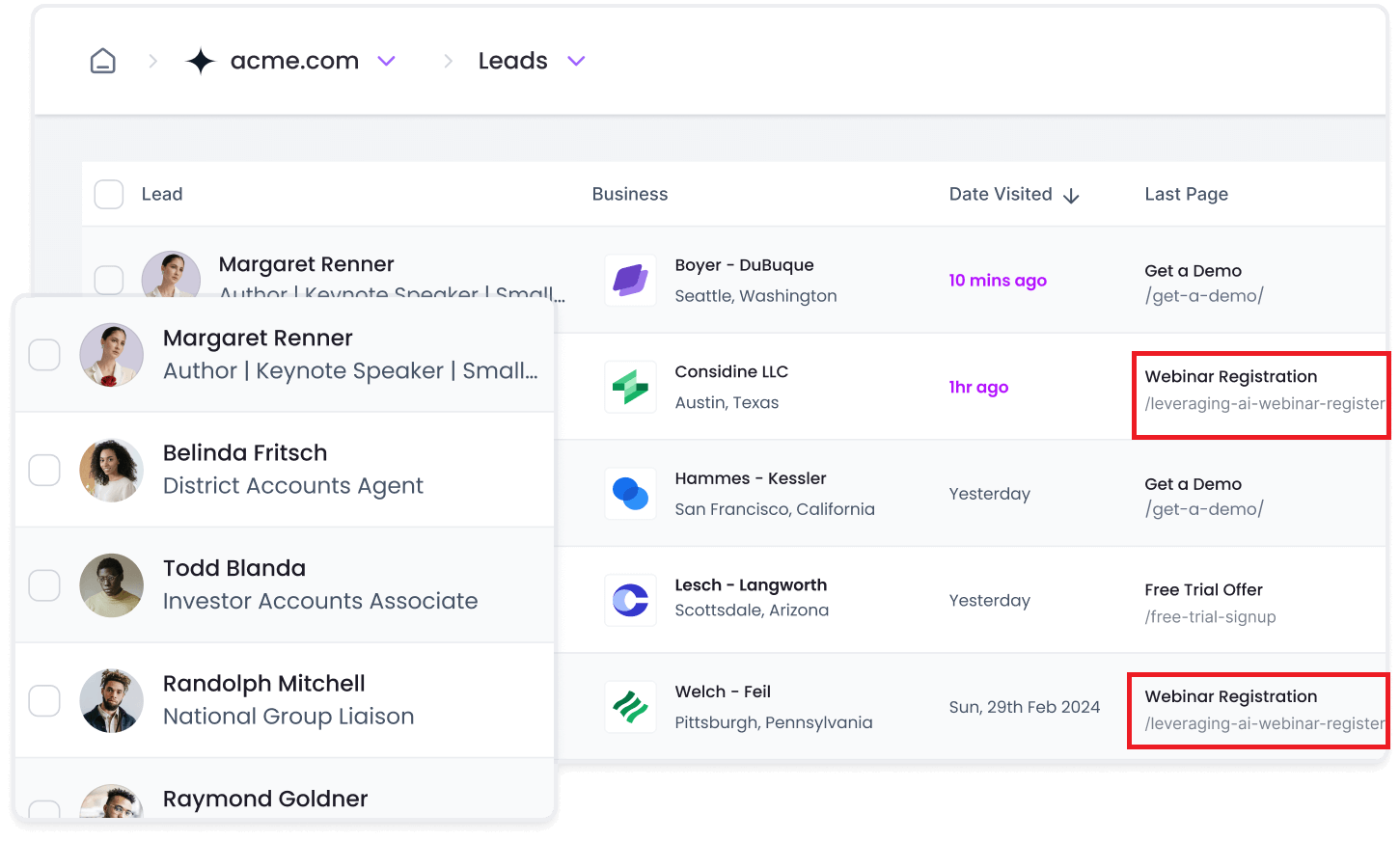

8. Optimized Landing Pages
Landing pages are custom web pages designed to capture a visitor’s information through lead forms. They’re highly focused, with clear calls to action (CTA), and offer something of value — like a demo, consultation, or trial.
A company might create a landing page for a free SEO audit, with a form to collect lead information.
Even if a visitor lands on your page and doesn’t fill out the form, TrafficID identifies them, providing the opportunity to follow up with relevant content that matches their interest.
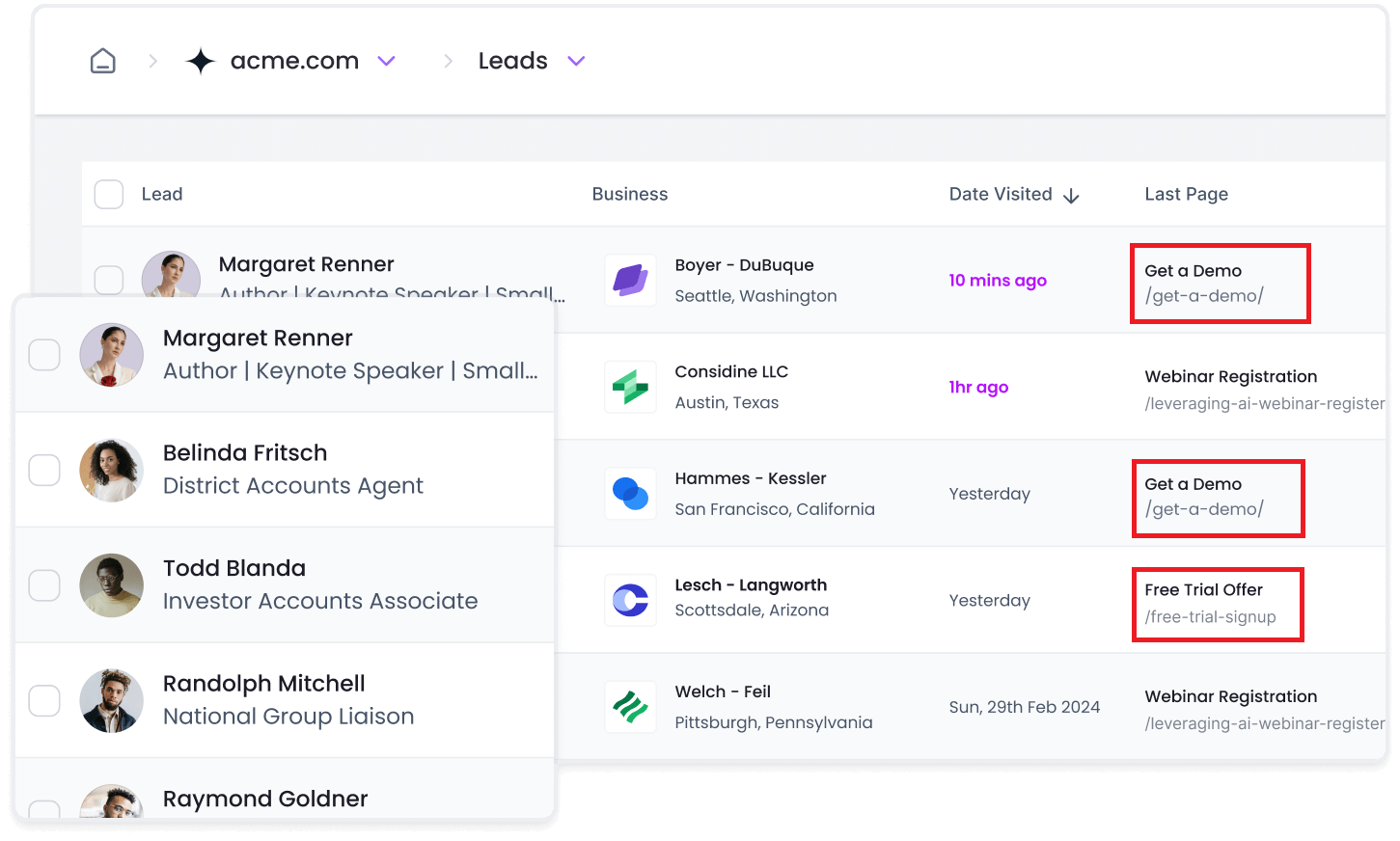

9. Customer Reviews and Testimonials
Social proof plays a big role in inbound marketing. Displaying positive reviews, testimonials, or case studies on your website can be incredibly persuasive for potential leads who are in the consideration phase.
Highlighting a case study about how a client doubled their leads with your service can attract similar businesses.
10. Referral Programs
Encouraging your existing customers to refer new leads is another great way to generate inbound traffic. People trust recommendations from their peers, making referrals a powerful form of lead generation.
One of the most successful stories of this tactic is Dropbox. Find out how Dropbox grew by 3900% in just 15 months through its referral program.
11. Guest Blogging
Guest blogging allows you to reach a broader audience by contributing content to relevant websites in your industry. It builds backlinks to your site, boosts SEO, and drives organic traffic.
For example, an agency might write a guest post for an industry publication on “Trends in Digital Marketing,” linking back to their own website.
12. Influencer Partnerships
Partnering with influencers in your industry can help you tap into a pre-existing audience that trusts their recommendations. This approach drives qualified traffic and brand awareness.
A lead generation company might collaborate with a well-known marketing influencer to promote a case study or webinar.
13. Chatbots and Live Chat
Lastly, you can implement chatbots and live chat on your website to provide immediate assistance to visitors, answering questions and guiding them toward a purchase decision. They’re great for capturing leads who are actively seeking information but may not be ready to fill out a form.
For example, a B2B website might use a chatbot to answer questions about pricing or schedule a demo instantly.
Now is your chance to add those hidden website visitors to your pipeline! Try TrafficID for 7 days, totally free of charge!
Read my LinkedIn story on how we generated 1,691 fresh leads in just two weeks from TrafficID 👇
Tips on How to Create Great Content for Lead Generation
Content + SEO is foundational for generating inbound leads. And when it comes to inbound marketing, trust matters.
81% of consumers hold trust as a very important factor in deciding whether or not to use a business, and 95% are likely or very likely to stay loyal to a brand they trust.
Here’s how to create great content that builds trust:
- Identify Pain Points: What problems does your ideal customer face? Address these in your content to provide value.
- Become the Answer: Create articles, blog posts, and guides that solve your audience’s pain points. (BrandWell’s SEO content writer is a great tool for this.) Host videos or webinars demonstrating your expertise and make yourself a valuable resource.
- Use Keywords Strategically: Use relevant keywords to improve search engine optimization and attract inbound leads organically. (BrandWell will do this for you automatically.)
- Make It Easy to Share: Include social sharing buttons and customer testimonials in your content to amplify your brand reach through referral marketing.
- Go Beyond the Blog: Offer downloadable resources like e-books and checklists. These free tools can grow your email list, furthering your inbound lead generation funnel.
How to Manage Inbound Leads
Attracting inbound leads is just the beginning; how you manage them determines whether they’ll convert into paying customers.
Effective lead management ensures that no potential customer slips through the cracks and that every interaction is meaningful and moves leads closer to a sale.
Here’s how to do it:
1. Implement Lead Scoring
Not every lead is worth pursuing. With lead scoring, you can focus only on qualified leads that are highly likely to convert — saving you an enormous amount of time on deals that will never happen.
Here’s how lead scoring works: assign points to every lead based on factors like demographics, behavior, and engagement with your content. This helps your sales team prioritize high-quality leads and nurture the rest.
For example, a lead who downloads your whitepaper and attends a webinar could score higher than someone who just subscribes to your newsletter.
With TrafficID, you can track a lead’s journey and feed this data directly into your lead scoring system, giving you a deeper understanding of how engaged a lead is before they even officially opt in.
2. Use a CRM System
A Customer Relationship Management (CRM) system is essential for keeping track of all your leads and interactions. It centralizes contact information, tracks communication history, and helps you segment leads for personalized follow-ups.
For instance, a marketing agency can use a CRM to filter leads based on the content they interact with, allowing for more targeted follow-ups.
TrafficID integrates seamlessly with your GoHighLevel and Zapier, enriching it with visitor data like pages viewed, visit frequency, and content consumption. This integration provides a more complete lead profile, making your CRM even more powerful.
3. Segment and Personalize
Segmenting your leads based on criteria like company size, industry, or behavior allows you to tailor your marketing efforts. Personalization goes a step further, offering content and solutions that resonate with each segment.
For example, you might create a segment for e-commerce businesses and another for tech startups, delivering different messages and offers to each group based on their unique challenges.
TrafficID provides insights that make segmentation more accurate. If a visitor is repeatedly engaging with your content about SaaS solutions, you can automatically assign them to a relevant segment for more personalized outreach.
Here’s an example of an email written based on TrafficID data:
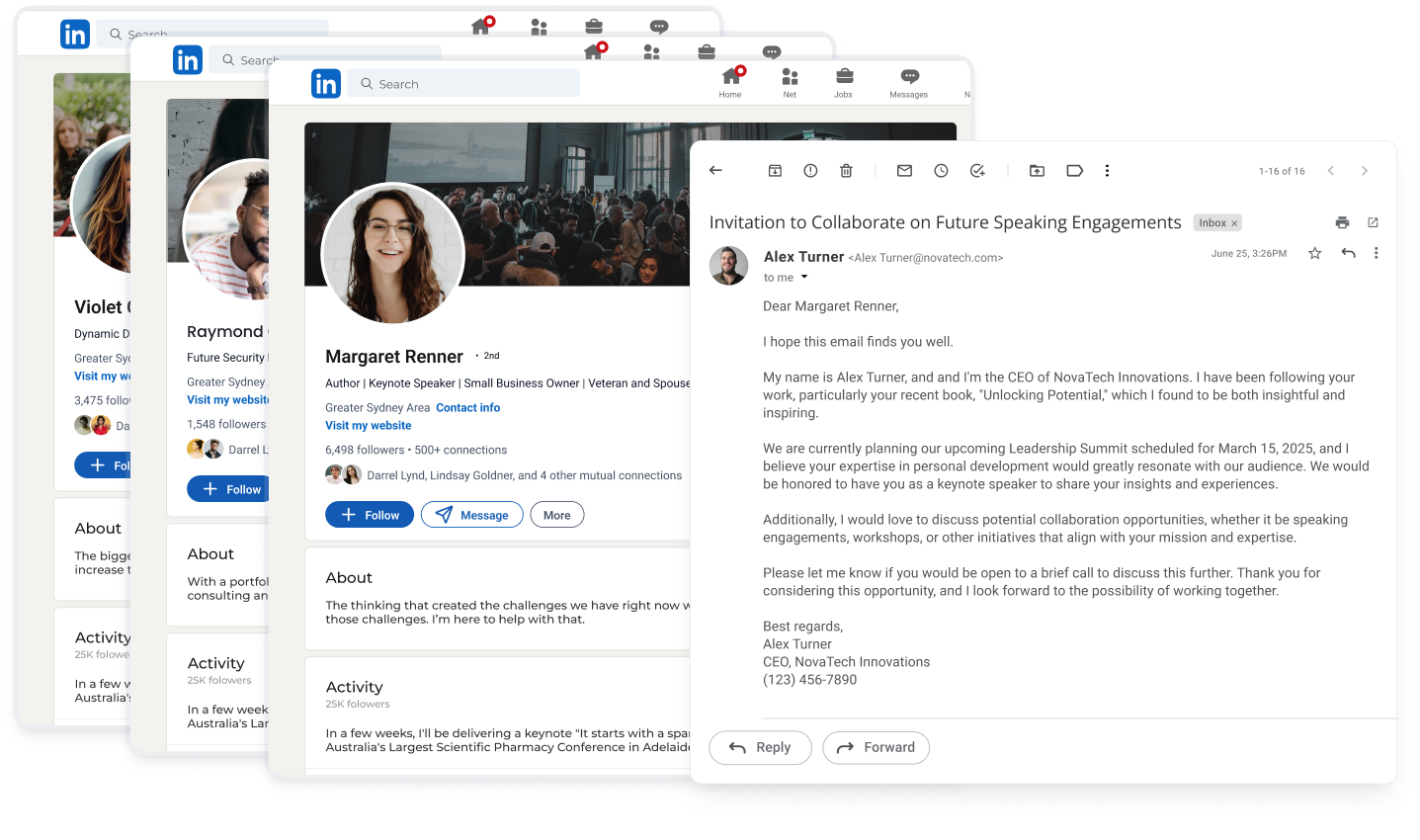

4. Follow Up Promptly, But Don’t Be Pushy
Timing is everything in inbound lead management. The faster you follow up after a lead shows interest, the better. However, it’s crucial not to come across as pushy or desperate. Use a balance of persistence and helpfulness to keep leads engaged without overwhelming them.
If someone downloads a case study, follow up with a friendly email a few days later offering a free consultation related to the case study topic.
TrafficID helps you track visitor behavior in real time so you know exactly when someone is engaging deeply with your site. This gives you the perfect moment to follow up when interest is at its peak.
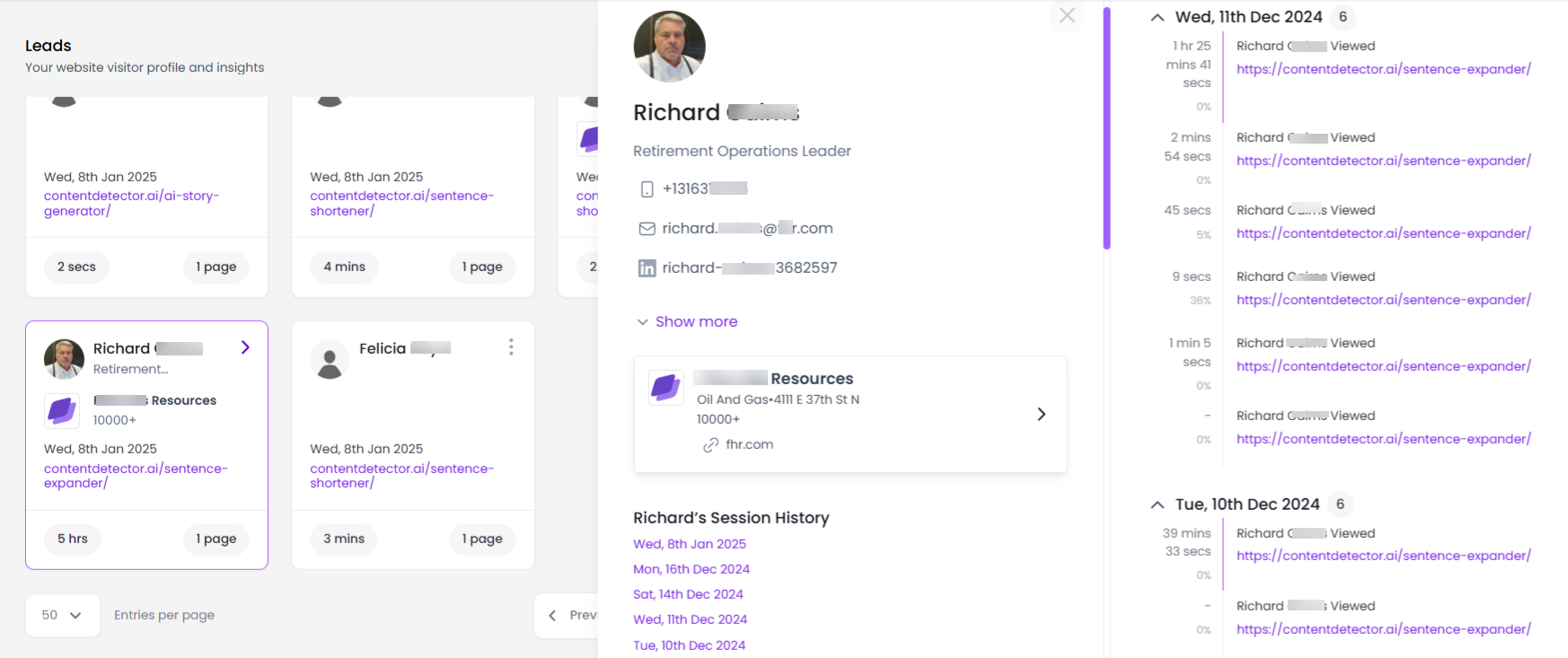

5. Run Lead Nurturing Campaigns
Lead nurturing campaigns involve sending a series of targeted communications to move leads down the sales funnel. This can include email sequences, retargeting ads, and personalized offers that keep your brand top of mind until the lead is ready to convert.
A lead nurturing campaign could start with a thank-you email after a webinar, followed by a case study download link a week later, and then a personalized demo offer.
Data from TrafficID can fuel your lead nurturing campaigns, showing you what type of content a lead has engaged with and suggesting the next step. If a lead has visited your pricing page multiple times, it might be a good time to offer them a free consultation or a discount.
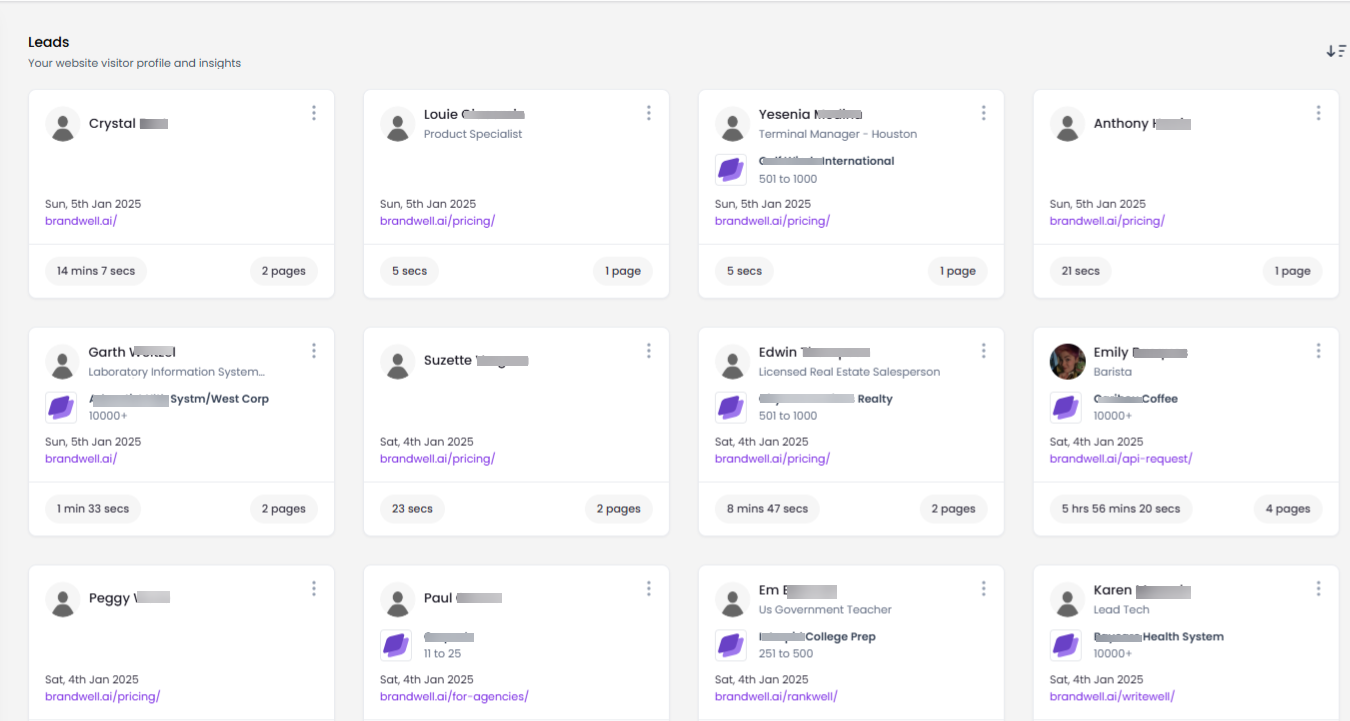

6. Align Your Sales and Marketing Teams
Inbound lead generation requires a seamless collaboration between sales and marketing teams. Marketing generates the leads and sales will follow them up. Aligning these teams ensures consistent messaging and a smoother handoff process.
For example, your marketing team could create a set of sales-ready lead profiles based on engagement metrics. Sales, in turn, will provide feedback on the quality of the leads, allowing them to refine their strategy.
TrafficID provides data that both marketing and sales teams can use to understand a lead’s behavior. This shared data helps keep everyone on the same page, reducing friction in the lead handoff.
7. Track and Analyze Performance
To continuously improve your lead management process, you need to measure what’s working and what isn’t. Analyze metrics like conversion rates, cost per lead, and lead velocity (how quickly leads move through your lead generation funnel).
If you notice that leads who engage with your video content have a higher conversion rate, you might want to consider investing more in video marketing.
8. Automate Routine Tasks
Automation can save time and reduce the risk of human error in lead management. Use marketing automation tools to handle repetitive tasks like email follow-ups, lead scoring, and segmentation.
Set up an automated email series for new leads, starting with a welcome message, followed by helpful resources, and a final call-to-action.
TrafficID integrates with many marketing automation tools such as WordPress, Slack, Wix, Shopify, and Magento, feeding them visitor insights to ensure that your automated messages are timely and relevant. If a visitor frequently checks out your pricing page, you can automate a follow-up with a pricing guide or offer.
Build a Successful Inbound Lead Generation Machine with TrafficID
Inbound lead generation can transform your business when you get it right. However, the difference between average results and exceptional success often lies in how effectively you track, analyze, and act on visitor behavior.
This is where BrandWell’s TrafficID comes in.
TrafficID is designed to give you a competitive edge by revealing what traditional analytics tools miss — insights about your anonymous website visitors, their engagement patterns, and the moments they’re most likely to convert.
Here’s how TrafficID can help you build a highly effective inbound lead generation strategy:
Identify and Convert High-Intent Visitors
TrafficID goes beyond typical web analytics by identifying anonymous visitors on your website. It reveals who’s actively browsing, what they’re looking at, and which pages they’re spending the most time on. This means you can see which visitors are the most engaged and ready to convert.
For example, if a visitor spends significant time exploring your Services and Case Studies pages, this could signal high intent, which allows you to prioritize outreach with tailored messaging.
When you know exactly which visitors are interested, you can focus your lead generation strategy on the hottest opportunities, saving time and increasing your ROI.
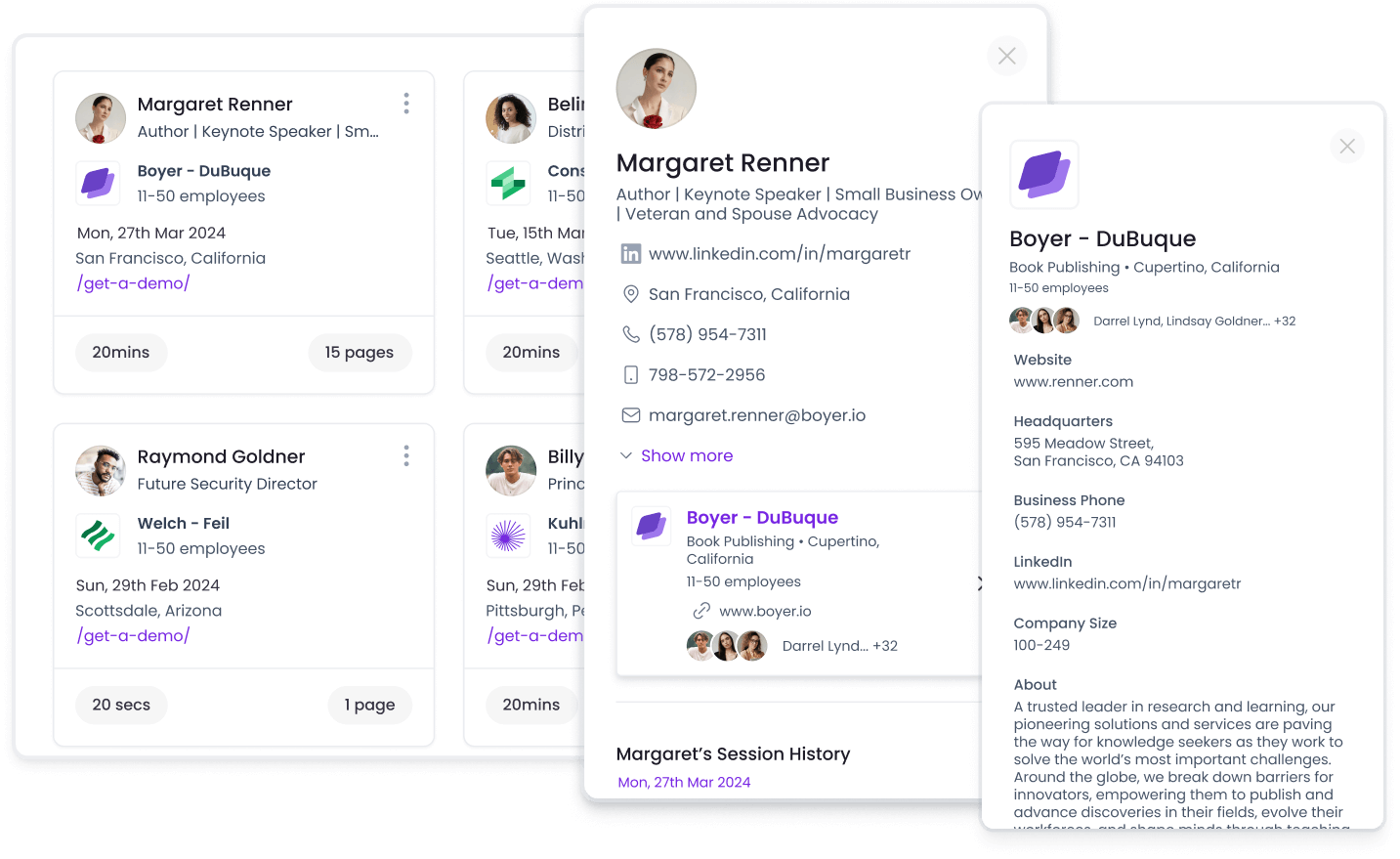

Gain Deep Behavioral Insights
To truly understand what motivates your leads, you need more than a name and email address. TrafficID provides a full picture of each visitor’s journey, including the content they interact with and the offers they download. This detailed view helps you better understand their interests and pain points.
Imagine tracking a visitor’s path from a blog post about “SEO strategies” to a detailed guide on “Content Marketing for Agencies,” and finally to your pricing page. This behavior signals that the visitor is interested in strategic SEO solutions and how they fit into a broader content marketing strategy.
These visitor insights enable you to craft highly personalized follow-ups that resonate with your leads’ specific interests, making your marketing more effective.
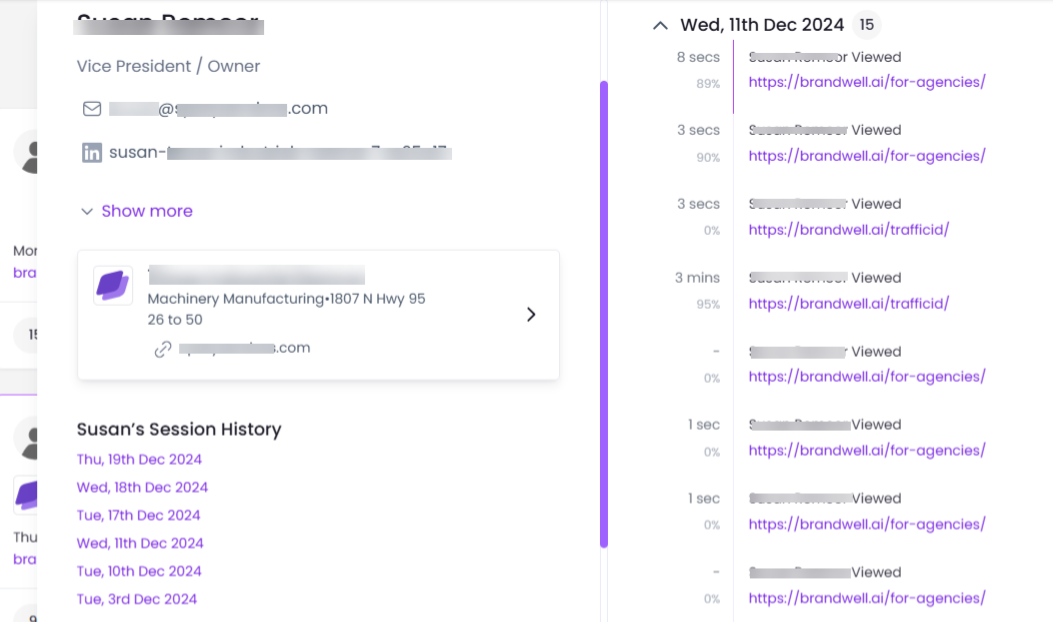

Streamline Your Nurturing Campaigns
TrafficID’s detailed tracking can also power highly specific nurturing campaigns. Instead of generic follow-ups, you can deliver content and offers that match each lead’s stage in the buying journey. Whether it’s educational content, case studies, or a tailored product demo, TrafficID provides the insights you need to nurture effectively.
For example, a visitor who reads your blog post on “Inbound Marketing Best Practices” and later watches a product demo video might be interested in a follow-up email that invites them to a personalized consultation.
Relevant and timely communication is crucial to moving leads down the funnel. TrafficID ensures that you’re nurturing each lead with content that speaks directly to their needs, reducing friction and speeding up the conversion process.
Track and Optimize Performance with Real-Time Data
Inbound lead generation requires continuous optimization to improve results over time. TrafficID provides real-time data that you can analyze to spot trends, adjust your content strategy, and refine your outreach. Know which campaigns are generating the most qualified leads and double down on what works.
If TrafficID shows that a specific blog post is consistently driving high-quality leads, you might consider repurposing that content into a webinar, email series, or downloadable guide to maximize its impact.
Get valuable tips on how to repurpose content to reach new markets.
Real-time analytics help you pivot quickly and make data-driven decisions, so you’re always improving your inbound lead generation efforts.
Take the Guesswork Out of Conversion Optimization
TrafficID gives you the power to A/B test landing pages, email campaigns, and CTAs with confidence. By understanding which tactics resonate with different audience segments, you can fine-tune your messaging and offers to maximize conversions.
For example, testing two variations of a CTA on a popular landing page could reveal which version converts better for visitors who’ve engaged with your webinars versus those who primarily download whitepapers.
Continuous testing and optimization are key to keeping your inbound strategy fresh and effective, and TrafficID’s data gives you the clarity needed to make the right adjustments.
“All these years you’re writing these long-tail blogs, you get two or three people to click on them but maybe they don’t take the next step, now you actually see them – who’s reading your post – and then you can reach out to them in another way and try to draw them in on some part of the funnel … like that’s freakin’ insane! I love it!” — Melissa Kunde, founder of KÜCO Media
Turn Insights into Action with TrafficID
Inbound lead generation isn’t just about attracting attention; it’s about converting that attention into real, measurable results.
As a marketer or agency leader, you know that each lead represents an opportunity to grow your business — but only if you can effectively identify, engage, and convert them.
With the right lead generation process in place, inbound leads can become the backbone of your revenue growth. Yet, without powerful tools to see beyond the surface of your website analytics, valuable opportunities will slip through your fingers.
That’s why it’s time to take the guesswork out of lead generation and put actionable data at the heart of your strategy.
TrafficID is designed to empower marketing agencies, lead generation companies, and sales teams with the insights they need to dominate inbound lead generation. From identifying high-intent visitors to automating lead scoring and enabling seamless collaboration between sales and marketing, TrafficID transforms your lead generation strategy into a streamlined, data-driven machine.
You’ll convert more leads, close more deals, and build stronger customer relationships — all while saving time and reducing friction in your sales funnel.
Why wait? Start turning anonymous website visitors into qualified leads with TrafficID and see firsthand how the right data can elevate your inbound strategy. Sign up for a free 7-day trial today and make the switch to smarter, faster lead generation.

UNLOCK YOUR POTENTIAL
Long Headline that highlights Value Proposition of Lead Magnet
Grab a front row seat to our video masterclasses, interviews, case studies, tutorials, and guides.

